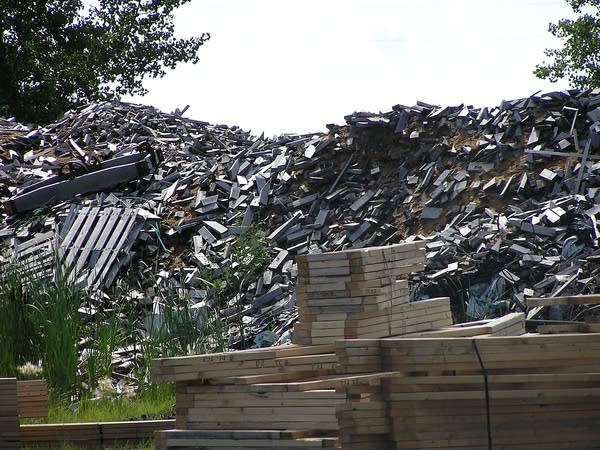Electricity from waste
Go Deeper.
Create an account or log in to save stories.
Like this?
Thanks for liking this story! We have added it to a list of your favorite stories.

Whining saws chop 2x4s into pieces in a large warehouse at the Grand Forks Truss Co. The plant turns out rafters and floor truss supports, and all that cutting leaves piles of wood scraps less than a foot long.
"It was starting to become quite an issue. We have a pile out there that's been accumulating for approximately 20 years," explains Grand Forks Truss owner Stu Johnson. "This will be a way to eliminate that pile."

When the University of North Dakota Energy and Environmental Research Center offered to turn all those wood scraps into electricity, Johnson was intrigued.
"We're kind of waiting to get it up and running and see how the electricity is being produced," says Johnson. "I would guess it will save us approximately $1,000 a month."
Turn Up Your Support
MPR News helps you turn down the noise and build shared understanding. Turn up your support for this public resource and keep trusted journalism accessible to all.
If all goes as planned, Johnson won't be buying any electricity for his plant. In fact, he'll be selling power to the grid during the hours the truss plant is not running.
A wood chipper is used to grind the lumber scraps into kindling.
"We bring everything into a grinder and load it into a bin," says project manager Darren Schmidt. "This bin gives us about a week's worth of fuel storage."

A conveyor carries the wood from the storage bin to a barrel-shaped gasifier that sits just outside a small shed. Schmidt says the wood is burned with low oxygen levels to create gas.
"A layman's way to say it is, if you start a campfire and put a blanket over it, it produces an immense amount of smoke, but it's hot enough to continue to burn," says Schmidt. "That smoke coming out from under the blanket has a lot of gases in it."
The woodsmoke from the burning lumber scraps is run through a series of filters, and some proprietary equipment researchers at UND developed for efficiently converting the wood smoke to natural gas. The gas powers an engine to generate electricity.
It doesn't produce electricity as efficiently as a big coal-fired power plant. But EERC Associate Director for Research Tom Erickson says one benefit is cleaner power.

"You're still going to have the same emissions you would have if you were burning a natural gas-type material. But we know natural gas is cleaner to burn than fuels like coal or wood waste by itself," says Erickson.
Biomass gasification isn't new. It has been tried for the past couple of decades, but EERC researchers say it's been difficult to build an economically and environmentally viable system.
Project manager Darren Schmidt says the new technology developed by UND researchers makes the plant practical for small-scale power generation.
"You combine the savings from the residue disposal and the savings from the power produced. And what we can offer is a three-to-five year payback on the customer's purchasing capital," says Schmidt.
This pilot project is designed to show biomass gasification can work on a small scale. Schmidt says the goal is to solve a waste problem and create energy.
EERC officials say the idea is a good fit for companies that produce a lot of biomass waste, like construction companies or food processors. They're also exploring its potential for producing electricity in remote areas with plentiful supplies of wood or agricultural crops.
There's skepticism in the marketplace because biomass gasification has failed to live up to its promises in the past. UND researchers hope the new technology they've developed will prove they've built a better system.






